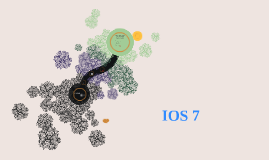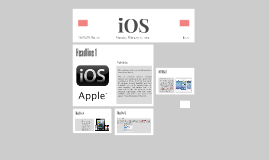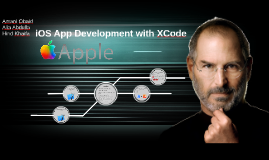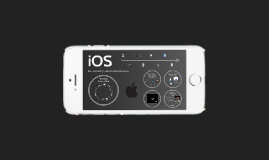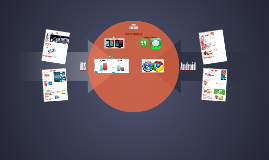iOS
Transcript: iOS iOS is the operating system for apple mobile devices In that they use short, iterative cycles, they are "scrum" A better Photos app, allowing quick management of your pictures More flexibility with messages (e.g. adding voice messages with ease) Keyboard improvements A Health app to help you monitor your heart-rate, fitness, and more across different apps More We will test first that individual components of software work individually, then that they function together Thank you for listening. Evolution Design added the App Store and iTunes improved maps, mail, and Siri Implementation Steve Jobs said "People don't know what they want until you give it to them" However, Apple actually listens to customer feedback daily Apple uses a Net Promoter Score (NPS) to measure customer satisfaction Ever since its birth, Apple as placed high importance on innovating in iOS 8, we saw the introduction of: iOS 4 iOS 2 released June 2009 The Next Cycle - iOS 9 released June 2010 added Siri, Game Center, iMessage, and iCloud iOS 6 more customizable (background) first, rigorous testing by employees and bug-fixing when the product is determined to be stable enough, it will be released to the public feedback will be received via Reddit, complaints, etc. complaints and bugs will be addressed with further updates iOS' Software Development Life-Cycle had basic apps added audio to messages new emoji For the User Apple uses "agile" software development methods to rapidly produce updates Apple, in the process of software development, keeps small teams, works in small cycles, and heavily uses collaboration completely new layout released July 2008 take information from test and implement them into the next iOS version find more ways to make it more user friendly fix any bugs that may be present iOS 8 Testing upgraded photos released September 2013 not customizable released September 2014 Innovations and Improvements released July 2008 "What They Want" Lack of customization Poor quality auto-correct Lack of dialects Battery easily drained added control center and FaceTime Audio Agile Steve Jobs' idea was always to design a user-friendly interface to please the customers, from his Macintosh computers to portable devices Ultimately, the "user" they would design it for was Steve Jobs himself This was lost after Steve Jobs' death iOS 2 What this Means for the Future Requirement Analysis released October 2011 added Passbook iOS 3 iOS 1 iOS 7 more user friendly allows the user's device to become more personal through customizations mobile device battery will last longer than before, making the person's life more efficient released September 2012 introduced the App Store and iTunes added new features like copy and paste and push notifications Customizable icon size Allow for customization for organization of contacts Allow for deletion of default apps Option to customize auto-correct Add more language varieties and dialects (i.e. Canadian English) added app folders and multitasking Jobs Innovate, Improve iOS 5 Jobs said, "People don't know what they want until you give it to them" Always try new things, but obviously, base it on the customers and listen to their reactions. released June 2007 reduce the amount of background energy the device uses add customization tag to settings add top 50 languages used in the world to settings add the languages available in settings to Siri upgrade auto-correct






